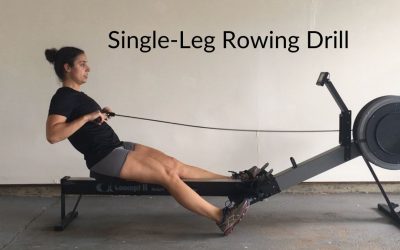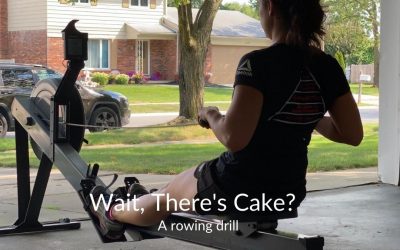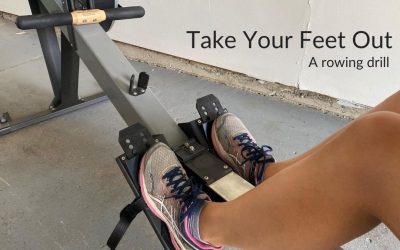The Best Way to Go Up and Down in Stroke Rate
When I talk about shifting stroke rates, either up or down, this is mostly done during the middle of a rowing piece. For example, you’re going from 22 strokes per minute (spm) to 24spm, to 26spm, then back down to 24spm. Maybe you’re going from 20spm to 26spm, etc. Whatever the stroke rate change is, it’s going up or going down within a couple of strokes.
Going UP in SPM
The number one mistake that I see when trying to increase spm is that people will try to do it all on the recovery. Let’s say you want to bump up to a 26spm from 20spm. When you do this on the recovery, you’ll pull yourself up to the front faster. You don’t know what stroke rate you’re going to see next. This happens when you try to hit that new spm on the next stroke by doing it on the recovery.
Making your recovery faster will hurt your ratio. You’ll be rushing up to the front and your drive will feel really heavy because all you’re doing is trying to get up to the front faster.
It’s better to build that stroke rate on the drive. That looks like pushing harder over a couple of strokes to bump up the rate. You might have to push for 110% for three to five strokes to inch that stroke rate up. If the stroke rate change is only two beats higher, you’ll probably get there a little bit easier. A good rule of thumb is to give yourself two strokes for every two spm beats to change the rate.
When you’re trying to build on the drive, think about getting that flywheel spinning with more pressure on the drive and then floating back up the recovery. Ideally, the recovery will naturally float up to become slightly quicker but ONLY because the drive is harder. They key here is to find the speed and power on the drive and keep the recovery relaxed.
Going DOWN in SPM
The opposite is true when you want to go down in stroke rate. When you want to go down in spm, you do that on the recovery. You’ll use the recovery to lengthen your stroke and slow it down. Then your goal is to keep that strong drive to maintain your power (which helps in keeping a nice split for you).
Reducing your stroke rate with the recovery can also help improve your ratio. When you’re going down in stroke rate, don’t let it turn into a paddle because it’s easy to do that. You’re going to want to keep the power. Reducing your spm is as simple as a little bit of lengthen on the recovery, keep the strong drive, little bit of lengthen, keep the strong drive, repeat!
One thing to keep in mind as the rate goes down is that you still want to manage the effort level that you’re putting into the drive. You can go down in rate and keep that drive just as strong as you did previously, but maybe you can’t hold that same split for the length of piece that you’re trying to do.
So, when you go down in rate that split may float up and get a little bit slower and that’s ok. Manage your intensity and how hard that drive is supposed to be with what the goal of your workout is.
I hope this post was helpful in teaching you how to go up and down in stroke rate. If you have any questions, feel free to shoot me an email at [email protected].
Single-Leg Rowing Drill
This drill for indoor rowing is just as the name implies. You take one foot out of the foot stretchers and only row with one leg. The leg that isn’t rowing hangs out on the side while you row. I don’t recommend trying this one in a boat at all. There’s really no...
Wait, There’s Cake?
I’m pretty sure I’ve said this at some point in my rowing career. Unfortunately, the response from my coach was “nope! Just cut the cake drill”. I’m not sure anyone knows why this drill is named that. I mean, it always makes me hungry! Joking aside, the cut the cake...
Take Your Feet Out
I'm pretty sure anyone who has tried rowing with their feet out has decided it’s their least favorite drill. Which must mean it’s a good one, right? Rowing with your feet out reveals when you are relying on the foot straps. When you rely on the straps, you’re pulling...



